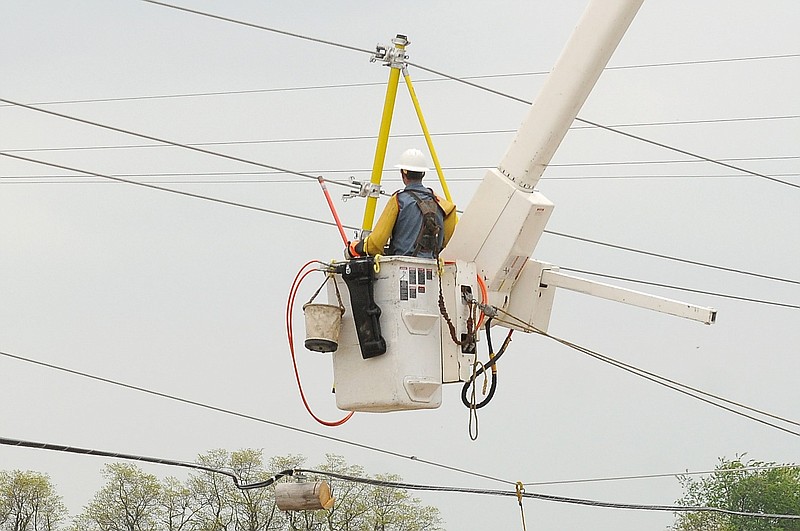The Farmers Electric Cooperative in Newport and the Clay County Electric Cooperative are getting nearly $50 million in U.S. Department of Agriculture loans to pay for hundreds of miles of new and improved power lines and thousands of miles of fiber-optic line for communication.
Farmers Electric, which has 994 miles of electric line for 5,100 members in Independence, Jackson, Poinsett and Woodruff counties, is getting $19.7 million for 151 miles of line to connect 866 consumers. That loan includes $4.3 million for smart grid technology with 161 miles of backbone fiber, which can provide telephone, internet and cable television service.
The Clay County coop, which has 13,155 customers and over 2,795 miles of electric line in Clay, Greene and Randolph counties as well as Missouri's Butler, Ripley and Oregon counties, is getting $30 million for 178 miles of electric line for 1,646 consumers. Their loan includes $21.2 million for 2,220 miles of fiber installation.
In an interview, Randolph County Judge Ben Wicker praised the coop's delivery of TV and internet service to his own home, calling it reliable and communicative and favorably comparing it to the satellite communication he used to get.
"From what I've seen, it's been very well-maintained, and very good service," he said. "They're trying to service everybody that they can and get it everywhere possible."
The loans come as part of the $2.2 billion Electric Infrastructure Loan and Loan Guarantee Program for rural areas, which help utility providers like electric coops build and and improve electric infrastructure, smart-grid technologies and renewable energy systems. It's part of the Rural Electrification Act of 1936, the federal New Deal program that brought power to rural areas.
"These investments ensure Arkansans in rural Northeast Arkansas have access to reliable electricity that will improve their quality of life and support business growth for years to come," said USDA Arkansas Director Jill Floyd in a statement. "Investing in rural energy infrastructure reduces electricity costs, prevents power outages in the face of severe weather and strengthens our nation's electrical grid ensuring energy independence for rural Arkansans."
